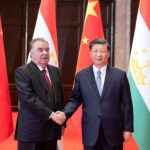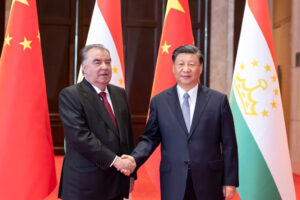Antonio Ortúzar, the managing partner and head of Baker McKenzie Chile’s Mining Practices Group, speaks to BNamericas about the Chilean mining sector, policies in the industry, trends, legislative risks, opportunities for stakeholders, and more.
BNamericas: Chile’s mining delegation went to the PDAC mineral exploration and mining convention in Toronto last month with the goal of attracting foreign investment. Did the trip yield positive results?
Ortúzar: After the decrease in exports, imports and investments caused by the global pandemic, the global trade market and the mining industry are still in a process of recovery, gradually reaching pre-pandemic volumes.
Taking this into account, this is only the second time that PDAC has taken place since 2019, so it is safe to assume that the promotion carried out by the Chilean delegation will have a positive impact in the medium term.
I think that is especially true for lithium exports, which rose 770% in 2022 compared with the average for 2017-21. So it is to be expected that new economic agents will have set their eyes on the Chilean mining industry.
Chile continues to be the country with the largest lithium reserves in the world, with 36% of the total, followed by Australia with 24% and Argentina with 10.4%. Even so, the largest producer of the mineral was Australia with 46.9% of world production, while Chile only produced 30%, so this shows that Chile has clear room to increase lithium production and exports.
BNamericas: What are your projections for mining investments in Chile?
Ortúzar: In a post-pandemic world, with the constant recovery of China and Asia in general, medium-sized and large mining sites are increasingly being reactivated and/or expanded, so my view is that the increase in foreign capital [flowing into Chile] is tied to the growth opportunities in the Asian market.
On the other hand, there is clear interest from the world’s major economies to have the lithium supplies that Chile may offer. Just as an example, it is possible to observe the repeated and sustained interest shown by both China and the EU. Considering the current state of the world, Europe requires portfolio diversification and, in particular, of the supply chain of raw materials. The latter certainly includes lithium. Ultimately, in my view, Chile has an important role to play in Europe’s energetic autonomy, not forgetting hydrogen!
BNamericas: Will China continue to play a leading role in the world’s mineral market?
Ortúzar: China continues to play a predominant role in the minerals market. Notwithstanding that, the participation of other players can be noted, mainly the US and hand-in-hand with technology companies such as Tesla. To a lesser extent, there is involvement of EU countries, which are showing more interest in rare minerals, as well as in lithium.
BNamericas: Could the emergence of sodium batteries and their use in China represent a risk for the Latin American lithium industry?
Ortúzar: As was the case with saltpeter, it is to be expected that any stagnation in the policy of opening up the Chilean lithium market to private companies could lead to the creation and development of substitutes for lithium. We’re at a key moment in time to strengthen the lithium industry in Chile and it’s necessary for lithium policy to be reinforced in the right direction, since stagnation would be a great loss for our country.
BNamericas: What’s your opinion about Chile’s national lithium policy?
Ortúzar: Mining minister Marcela Hernando recently stated that public-private partnerships are the only manner to really develop the lithium industry in our country. It is not just extraction of the brine, it’s a matter of technological transference and efficiencies. These sorts of synergies might not be provided by the State.
BNamericas: How were the green hydrogen, desalinated water or renewable energies addressed at PDAC?
Ortúzar: These were the most interesting and frequently discussed topics. In general, clients are very interested in Chile’s advantages for both production and future exports of green hydrogen. On the other hand, due to the current shortage of water, the use of desalinated water is playing a key role in the development of the mining industry. We are continuously advising clients in order to enhance and facilitate the full development of desalination in all its phases.
Renewable energies are also fundamental in the progress of mining projects. In Chile, 53.3% of the energy matrix involves this type of energy. Considering that Chile is a very interesting country due to its unique geography, we are advising a large number of clients on the development of photovoltaic and wind farm projects.
BNamericas: What are the greatest challenges for Chilean mining?
Ortúzar: They are related to the tax system and the mining code provisions, such as the mining royalty bill that is intended to replace the current system of the specific tax on mining for copper and lithium exploitation. This bill will charge mining companies that produce more than 50,000t/y of copper as a way of compensating the State for the extraction of non-renewable resources.
The tax will be calculated on annual copper sales [ad valorem] and in relation to the adjusted mining operating income. This has been arduously discussed in congress, with opposing positions on the costs and benefits it may entail. Those who oppose its approval believe that national mining will be at a disadvantage compared with the international market. And supporters state that the proposal for a 3% compensation on the nominal value of the minerals extracted still leaves industries with a profit of up to 20% of their investments.
Some 70% of Chilean mining production is controlled by private companies and they would be greatly affected by this tax increase.
BNamericas: What about Law No. 21,420, which reduces tax breaks for the mining industry and changes various regulations regarding concessions?
Ortúzar: This law will go into force on January 1, 2024, with several amendments to the mining code and other legislation applicable to the sector. It will increase the cost of mining exploration concession licenses and will reduce the term of exploration concessions to four years, non-renewable, affecting both planning for mining properties and land speculation for different actors in the sector.
BNamericas: What are the law’s riskiest aspects that should be improved?
Ortúzar: Given the new, single and non-extendable four-year period of exploration concessions, those currently registered in the mining conservatory must be extended for up to two more years, as the current legislation allows before next January. If that measure is not taken, the concessions will be understood as being for a period of four years from their original date, which could obviously cause procedural problems.
Source : BNAmericas
















